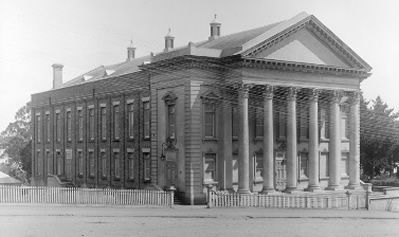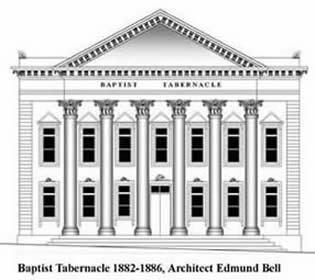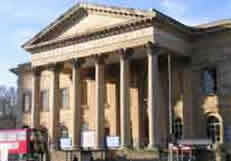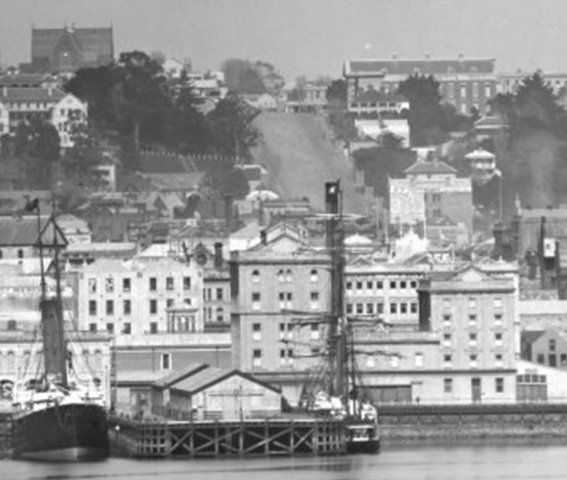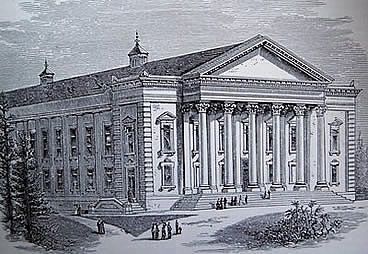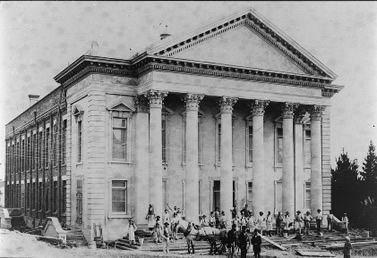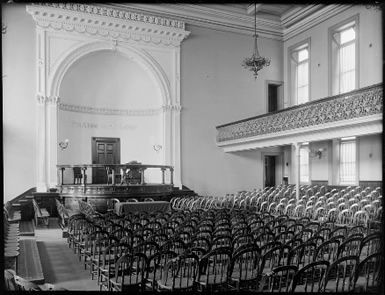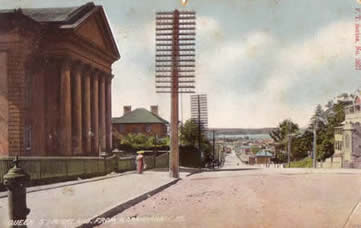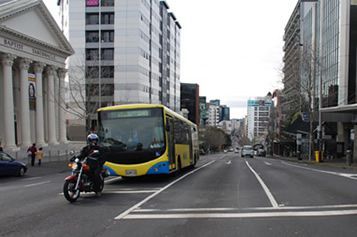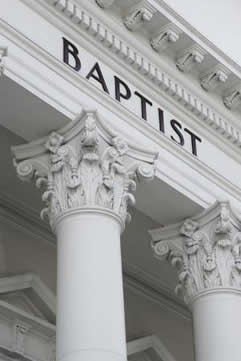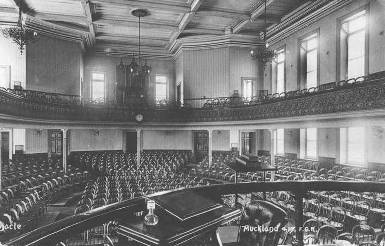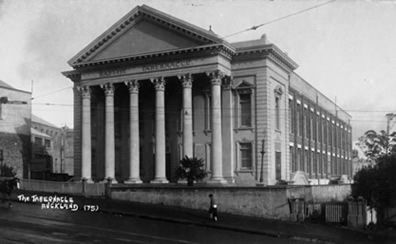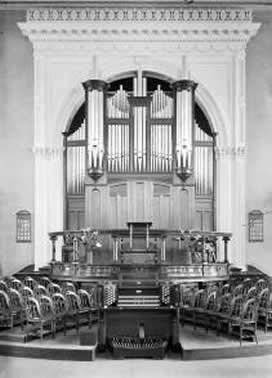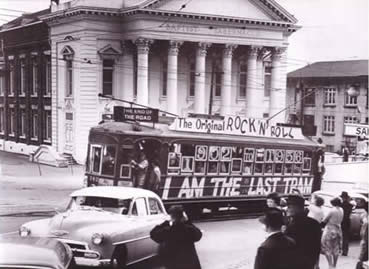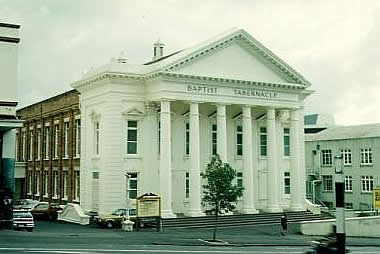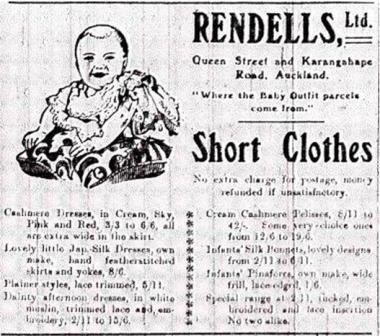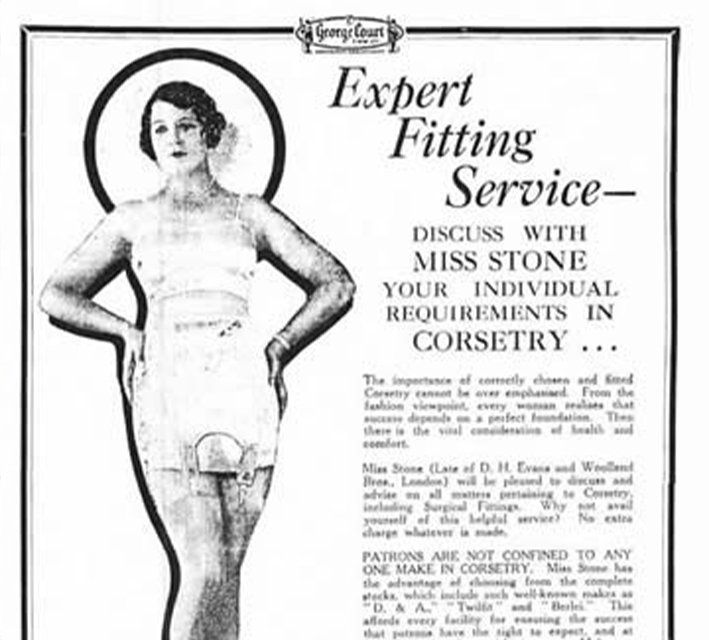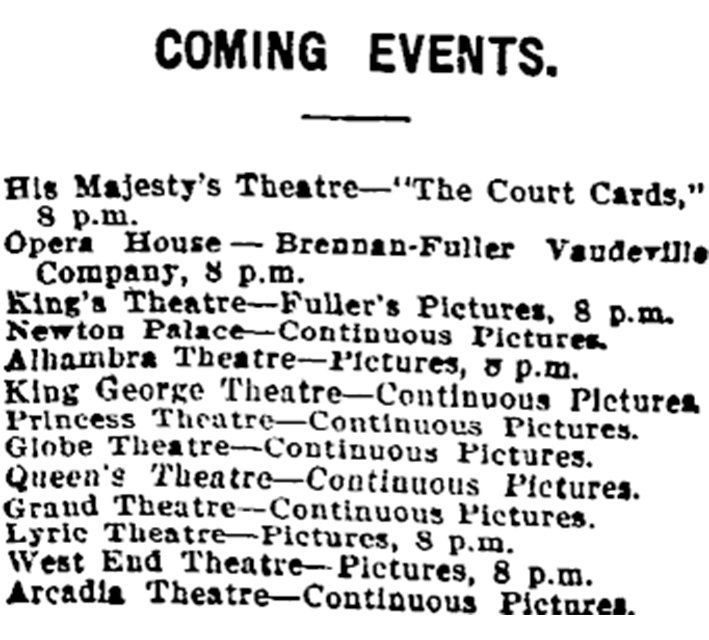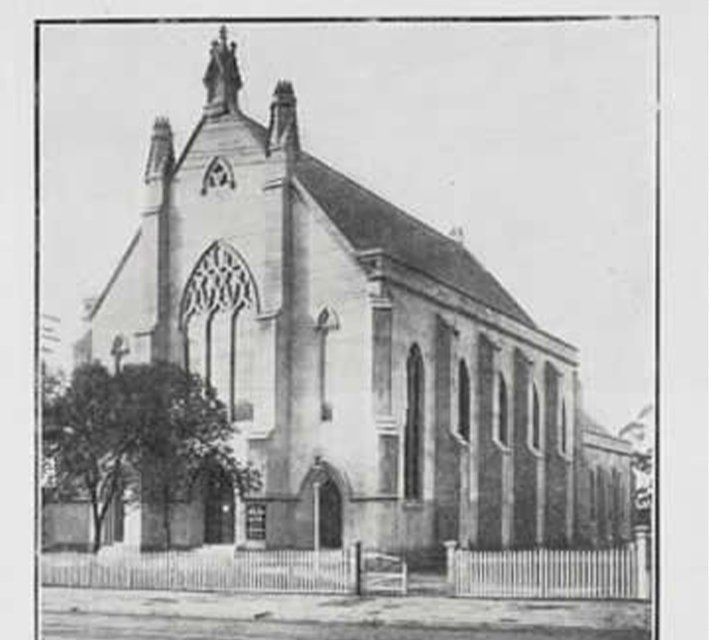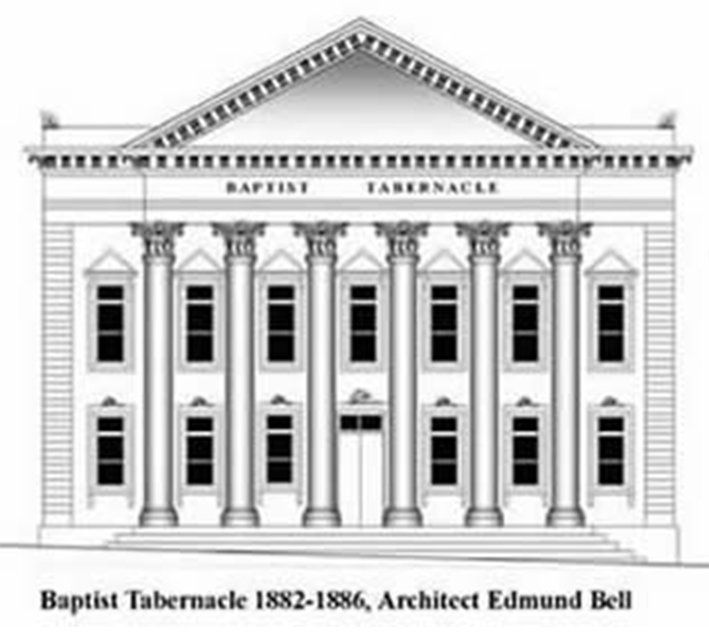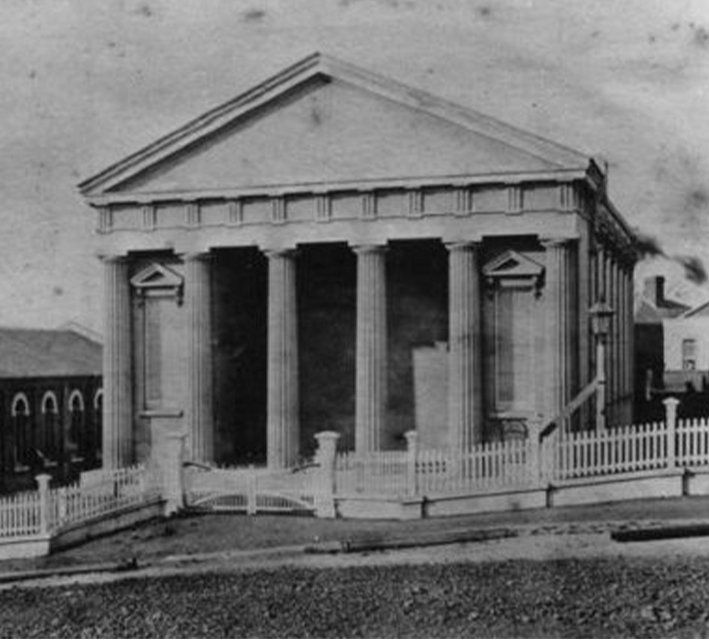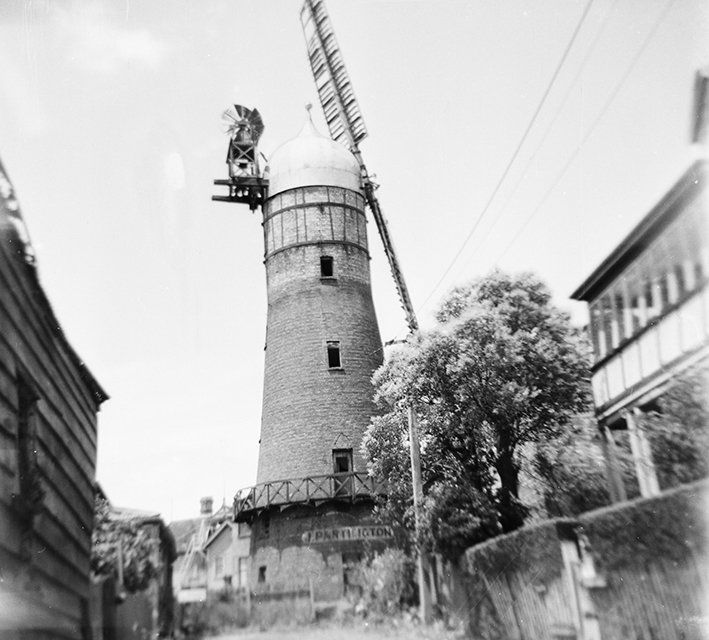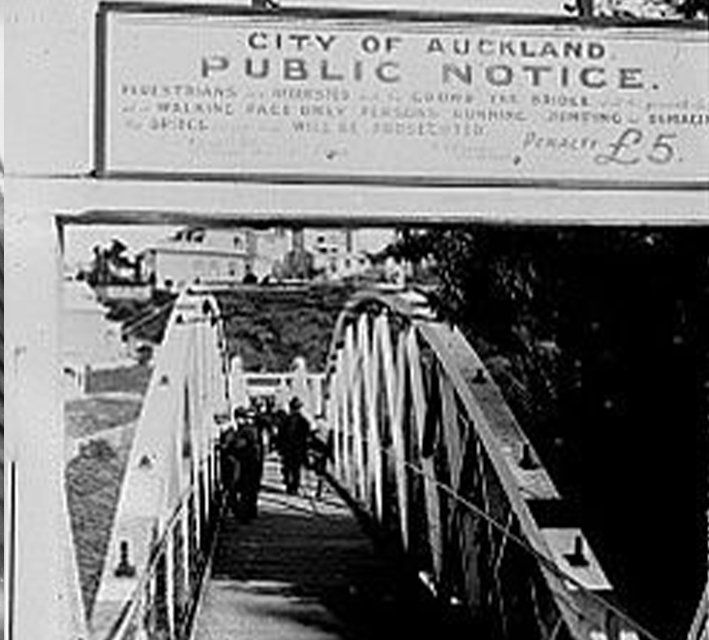The imposing Baptist Tabernacle at the top of Queen Street was the largest building in the town of Auckland when it was opened in 1886. The Baptist Church had been founded in Auckland in 1855 and had constructed a chapel in High Street. Since the mid 1860s the congregation had met in a wooden building on the corner of Federal and Wellesley Streets.
In 1881 the new Baptist pastor Thomas Spurgeon arrived from London and his preaching drew such crowds that a larger venue was needed. At first, the Choral Hall on Symonds St was used, but eventually the site on the corner of Queen St and Karangahape Rd was purchased, and funds were raised for a building that would seat 1,500 people and accommodate possibly a further 300 standing.
The resulting building is modeled closely upon the Metropolitan Tabernacle in London, a much larger building. This resemblance is directly due to the fact that Thomas Spurgeon's father C. H. Spurgeon was the pastor of the London Church at this time. Charles Spurgeon had insisted that the new London Metropolitan Tabernacle, employ Greek architecture because the New Testament was written in Greek. This one decision has had a great effect on subsequent church architecture throughout the world.
London Baptist Tabernacle.
The Queen Street building was designed by the architect Edmund Bell, although how much he relied on plans of the London Building is unknown. The Auckland building is much smaller than its prototype in London and there appears to be some differences in the details; the interior of the London Tabernacle was completely destroyed during the Blitz so it's difficult to determine how much of the Auckland interior was derived from it - the stone facade of the London building was retained and now fronts a new structure from the 1950s. The enormous Corinthian portico appears to be based upon those of the Pantheon in Rome. This building is one of the most important surviving structures from Imperial Rome and was converted into a Christian Church in 609AD, making it probably the oldest structure in continuous use as a Christian Church.
Initially the structure was planned to face Karangahape Road but for a number of reasons the building was built facing Queen Street. Both in its position on the crest of the hill at the top of Queen St and its huge Roman Imperial Portico it was calculated to impress. The structure was visible all the way up Queen St from the waterfront.
Auckland in 1901 showing St Benedicts (left) and the Baptist Tabernacle (right).
The Artist's presentation drawing of the Auckland building.
Completion in 1885
The choice of Roman Classical for the building is very appropriate because this is the type of building that the early Christians under the Roman Empire would have prayed in.
The London and Auckland Tabernacles are therefore visual manifestations of the Early or 'Primative' Christian Church before it was modified /corrupted during the medieval period. Whereas most 19th century Christian Churches favoured one of the various Gothic styles; here the Baptists have deliberately made a public statement to distance themselves from the darkness, gloom and superstition of the Middle Ages.
This is reinforced inside where the spacious light filled interior symbolizes the light of God's grace. Where most churches would have stained glass windows filled with images here the light is subtly filtered through pale frosted glass in geometric patterns.
The Baptists are so called because they reject infant christening in favour of adult baptism, on the basis that one must be cognizant of God's grace in order to receive it. Likewise they reject church ritual in favour of prayer, group singing and sermonizing. As a result their church interiors tend to be plain with little decoration and no imagery, but with plenty of seating, very good sight lines and excellent acoustics.
The 1913 Pipe Organ
Instead of a fixed altar the focus of the room is an elegant arch framing the pipe-organ. A movable table serves as an altar and beneath the dais is a large font for the full body immersion of adults.
The horseshoe gallery is supported by elegant cast iron columns and faced by a beautiful curving cast-iron balustrade topped with a polished cedar rail, the details of which are picked out in bronze and gold.
The paneled ceiling is beautifully detailed with delicate neo-classical stencil work painted by Charles Blomfield [ the artist noted for his views of the Pink and White Terraces ] and his brother Samuel Blomfield.
View from K' Rd corner down Queen Street circa 1914.
View from K' Rd corner down Queen Street circa 2008.
The restored foliage work of the Corinthian Capitals.
On Easter Monday, 1884, the foundation stone was laid by Dr Kenderdine, a well known Surgeon. At this ceremony, Pastor Spurgeon announced that the building should be opened free of debt. The Ladies Fundraising Committee put in an immense amount of work organising numerous fetes and fairs to help raise the money required.
In 1884 four ladies from the congregation [ including possibly Mrs Blomfield senior ] “very courageously went up in the gas lift to perform the ceremony. It was a feat which few unpracticed people would care to attempt". This gas lift would have been the hydraulic platform lift that had been used to apply the cement stucco on the front of the building. They were lifted to the very apex of the pediment [ the triangular gable] where they laid the final stone of the building.
Since there were no elevators in New Zealand at the time this must have been an amazing public event reminiscent of the novels of Jules Verne than the opening of a Baptist Church at the far end of the British Empire. Sadly there appear to have been no photographs taken of this remarkable ascent, or indeed of any aspect of the opening ceremony.
The involvement of women in this way was probably due to the important part they had played in the creation of the building. Whereas most Congregations relied upon raising money through loans and thus had to service mortgages for years or decades after the completion of a new church, the Baptists were very proud of the fact that when they opened this building it was already paid for. It cost £14,000.
The interior from the dais.
This view shows the first organ located opposite the alcove and lectern.
The Tabernacle was opened on 12th May 1885. When the service began, 100 pounds was still required, and this was raised. When the people heard that the building was opened debt free, they sang the doxology over and over again, giving praise to God. Certainly creating such a large building in a year was pretty close to miraculous in itself.
View of the Tabernacle circa 1910
Opening debt-free was only possible because of the large amount of fund-raising work done mostly by the ladies of the congregation, so their inclusion in the completion ceremony is very likely to have been a gesture of special significence on the part of the Church Elders.
The inclusion of women in the opening ceremony may well have been a gesture to show how inclusive the Baptist Church was towards women. It was largely due to middle class protestant women like the ladies involved in the Baptist fundraising Committee that New Zealand women obtained the vote very soon after this time in 1893.
1913 Pipe Organ
Like its model in London, the Auckland Baptist Tabernacle is a significant work of architecture and an important landmark. Both are located in the thick of things, on very important, busy central locations, the London Tabernacle is at the Elephant & Castle and the Auckland Tabernacle is at the corner of Auckland's oldest, busiest and most important thoroughfares, Queen Street and Karangahape Road.
Thanks to www.tabernacle.org.nz
The Last Tram passing the Tabernacle 1956.
View circa 1990 showing details removed from capitals of columns.
The Corinthian columns of the Portico were stripped of their detailing in the 1960s and were recently restored.
Subscribe to the
Karangahape Road newsletter...
NEWSLETTER
Thank you for signing up for our newsletters.
Please try again later.
Karangahape Road Business Association © All Rights Reserved 2020
Made by Monster Valley & This Needs Doing
AUCKLAND TRANSPORT JOURNEY PLANNER:
Find out your best route to Karangahape Road by bus, ferry or train.


